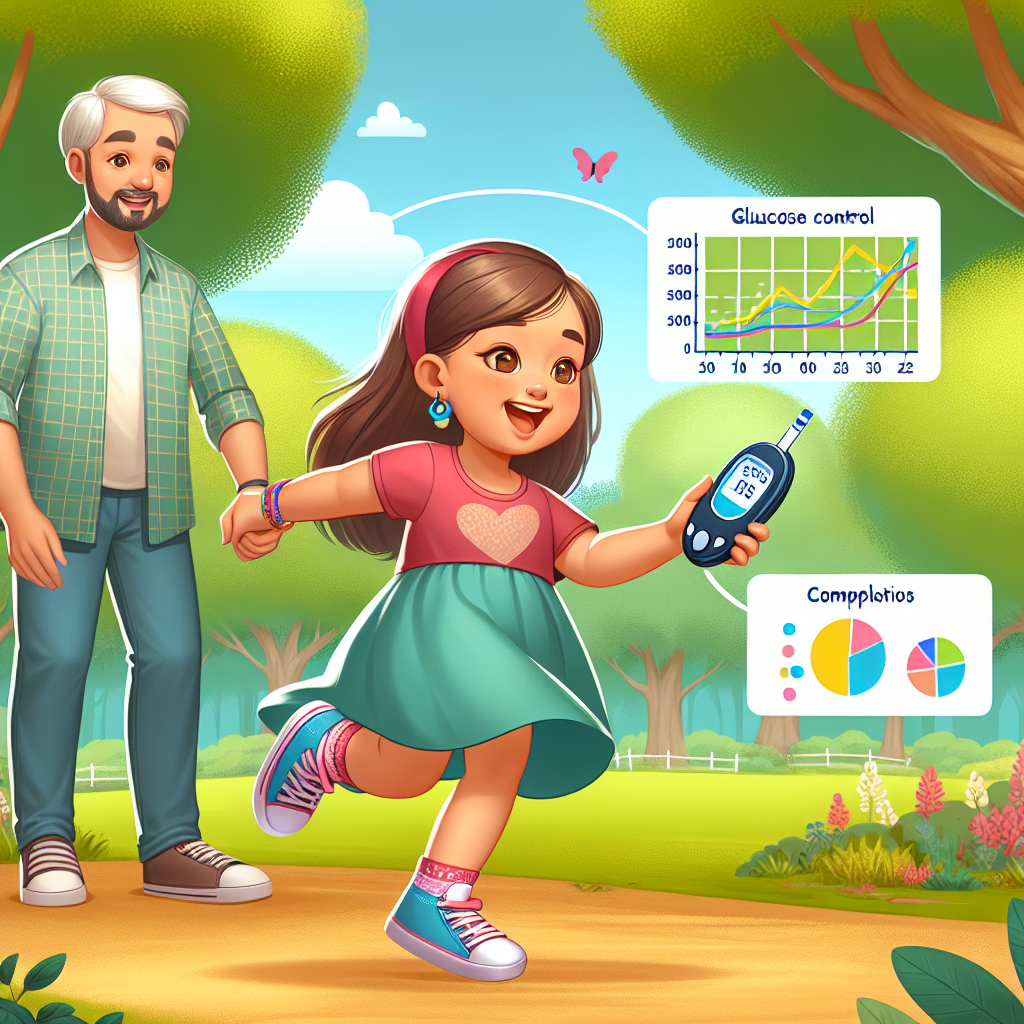Introduction
Managing Type 1 diabetes in children can be a daunting task, not just for the young patients but also for their families and healthcare providers. However, a recent study has shed light on how strict glycemic control can significantly reduce complications in children diagnosed with this chronic condition. This article will delve into the findings of the study, the importance of glycemic control, and practical strategies for maintaining optimal blood sugar levels in young patients.
The Study: Key Insights
The study, which has generated a lot of interest within the medical community, focused on children with childhood-onset Type 1 diabetes. Researchers aimed to understand how maintaining stringent glycemic control could influence the occurrence of diabetes-related complications.
Methodology
The study analyzed a diverse group of children diagnosed with Type 1 diabetes, all monitored over several years. Researchers utilized various metrics to evaluate glycemic control, primarily focusing on HbA1c levels—a marker that reflects average blood sugar levels over the past two to three months.
Findings: The Complications Reduced
The research revealed compelling evidence that strict glycemic control can lead to a significant reduction in various complications typically associated with Type 1 diabetes in children. These complications include:
- Diabetic Retinopathy: One of the most concerning complications, affecting the eyes and potentially leading to blindness if left unchecked.
- Nephropathy: Kidney damage which can progress to chronic renal failure.
- Neuropathy: Nerve damage that can lead to debilitating conditions such as peripheral neuropathy.
- Cardiovascular Issues: Increased risk of heart disease and stroke.
Importance of Early and Strict Glycemic Control
Understanding the significance of maintaining glycemic control from an early age is crucial. The longer blood sugar levels remain unmanaged, the higher the risk of developing debilitating complications. Here’s why early and strict glycemic control is important:
- Preservation of Beta-Cell Function: Stringent management can help preserve the pancreatic beta-cells responsible for insulin secretion.
- Reduced Risk of Complications: As highlighted by the study, early control directly correlates with fewer complications.
- Improved Quality of Life: Children who maintain strict control often experience fewer symptoms and have better overall health.
Long-Term Benefits
While the focus is often on immediate outcomes, it’s essential to consider the long-term benefits of strict glycemic control. These include:
- Longevity: Better management of blood sugar levels can add years to the life of a child with Type 1 diabetes.
- Enhanced Life Quality: Minimizing complications allows for a more active and fulfilling life.
Practical Strategies for Maintaining Glycemic Control
Achieving and maintaining strict glycemic control in children requires a multi-faceted approach. Here are some practical strategies:
Regular Monitoring
Continuous Glucose Monitoring (CGM) systems can provide real-time data on blood sugar levels, helping to make immediate adjustments as needed. Regular HbA1c tests also play a vital role in long-term monitoring.
Diet and Nutrition
A balanced diet, rich in whole grains, lean proteins, and fresh vegetables, can have a significant impact on blood sugar levels. Avoiding foods high in sugar and refined carbohydrates is crucial.
Physical Activity
Encouraging regular physical activity can enhance insulin sensitivity and contribute to better glycemic control. Activities should be age-appropriate and enjoyable for the child.
Insulin Management
Proper insulin management is foundational. This includes:
- Correct Dosage: Ensuring the child receives the right amount of insulin at the right times.
- Advanced Insulin Delivery Systems: Utilizing insulin pumps or pens for more precise control.
Conclusion
The study’s findings provide compelling evidence that strict glycemic control can significantly reduce complications in children with Type 1 diabetes. By employing a comprehensive approach that includes regular monitoring, balanced nutrition, physical activity, and proper insulin management, it’s possible to enhance the quality of life and long-term health outcomes for young patients.
If you’re a parent or caregiver of a child with Type 1 diabetes, implementing these strategies can make a world of difference. Always consult with healthcare providers to tailor the best management plan specific to your child’s needs.
Stay informed, stay proactive, and take control—because when it comes to managing Type 1 diabetes, every step towards better glycemic control is a step towards a healthier future.
